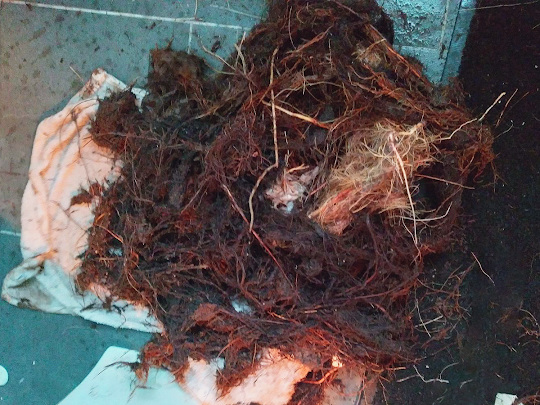Know Your Clog: The Distinction Between Hard And Soft Blockages
Posted By: Zoom Drain Franchise
When it comes to your drains and sewers, knowing is half of the battle.
Sure, it’s a topic not many of us want to think about but the more educated we are, the less we’ll have to deal with a stressful emergency. You know the one, when it’s 3:00 a.m. and you flush your toilet and all of the sudden there’s water spilling throughout your bathroom – stressful just to think about, right?
The cause of that backed up toilet could be several possibilities, but the most likely source is a clog in the wastewater line. Not all clogs are the same, however, and some can be more trouble than others. There are two distinct types of clogs, so let’s get to know them a little better.
Knowing The Signs Of A Potential Blockage
Before you can be sure there’s a blockage in your line, it’s best to know the warning signs. Like many of the things around your home, your drains will let you know if there’s trouble brewing. These come in a variety of ways but can affect any drain inside of your home. You might flush the toilet and see it slowly filling back up afterwards or maybe you’ve noticed an embarrassingly potent smell coming from your kitchen sink. It could also be bizarre gurgling noises coming from your bathtub after use or perhaps it’s just that your bathroom sink is draining wastewater slowly.
If you’ve detected one, or any, of these problems, there’s probably a clog in your line. The most common type of clog is known as a soft blockage and its cause can actually be a bit surprising.
Soft Blockages: Paper Products, Grease And More
Made up of everyday materials that manage to find their way down the drain, soft blockages are typically associated with toilet paper and so-called “flushable” wipes. Never flush anything that isn’t toilet paper, no matter what the label says – so why is toilet paper getting stuck in there?
Sometimes, toilet paper isn’t given the proper environment to disintegrate, which is almost always a direct result of using too much or wadding it into a ball when placing it into the toilet.
Your toilet isn't the only culprit when it comes to a soft blockage forming in your line. Hair mixed with soap scum from your sinks and showers or cooking grease mixed with food residue from the kitchen sink can form a soft blockage as well. When there’s too much material finding its way into your pipes, it piles up and, over a period of time, it only exacerbates the problem.
To rid your line of a soft clog will still require a professional, but it’s typically an easy solution, one that won’t break the bank or take up too much of your time, with the right equipment.
Hard Blockages: Tree Roots, Mineral Buildup And More
 Things can get a little more complicated when it comes to solving a hard blockage. Hard blockages are caused by objects blocking the line, most often outside. One of the most common hard blockages is tree roots, which over the course of time will invade your line in the search for nutrients that are close to the surface. Mineral buildups are another example, as sometimes calcium, magnesium and potassium, in properties with hard water, can just sit in the line. It could even be a children’s toy that they flushed, because we’re all fascinated at that young age.
Things can get a little more complicated when it comes to solving a hard blockage. Hard blockages are caused by objects blocking the line, most often outside. One of the most common hard blockages is tree roots, which over the course of time will invade your line in the search for nutrients that are close to the surface. Mineral buildups are another example, as sometimes calcium, magnesium and potassium, in properties with hard water, can just sit in the line. It could even be a children’s toy that they flushed, because we’re all fascinated at that young age.
Do not attempt to take on a hard blockage on your own! It will call for a professional and, especially in the case of tree roots, can prove to be a challenging fix. But, with a video sewer inspection, powersnaking and high-pressure Zoom Jetting service, we can quickly handle it. It doesn’t matter what kind of blockage, or what kind of wastewater issue, we have the technology, experience and tools to solve your problem, so you can get back to what’s most important in life. Give us a call or schedule an appointment online at your nearest location today.